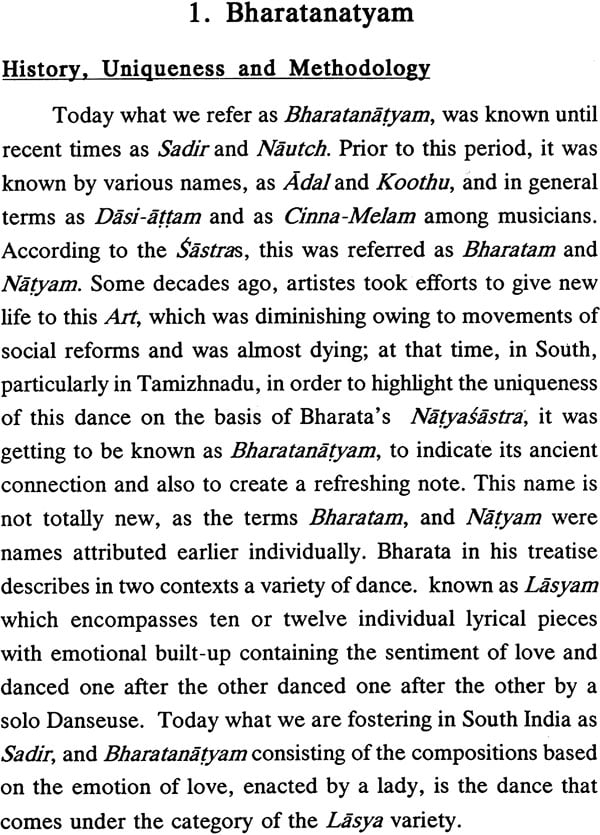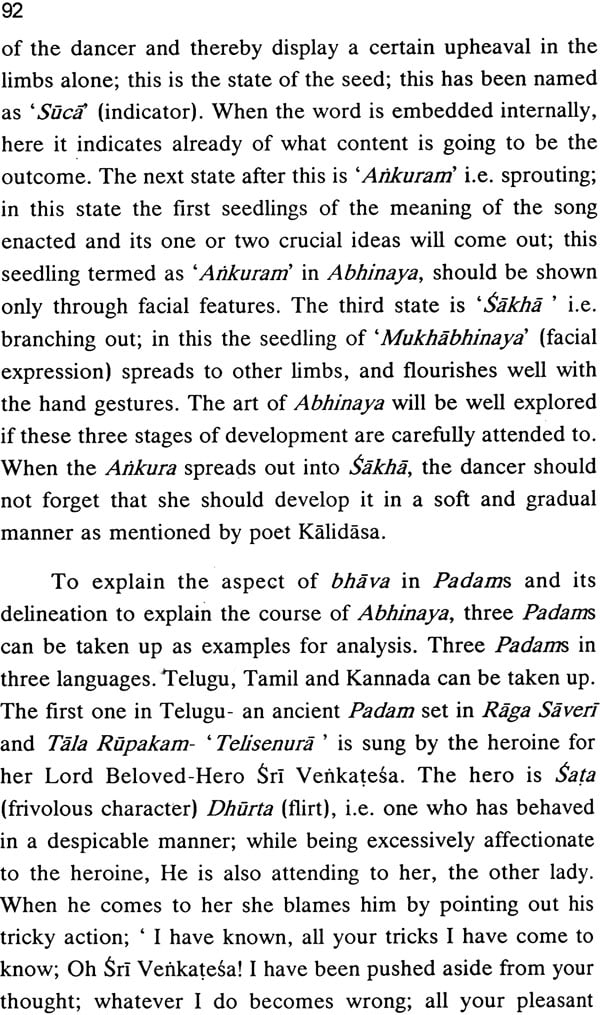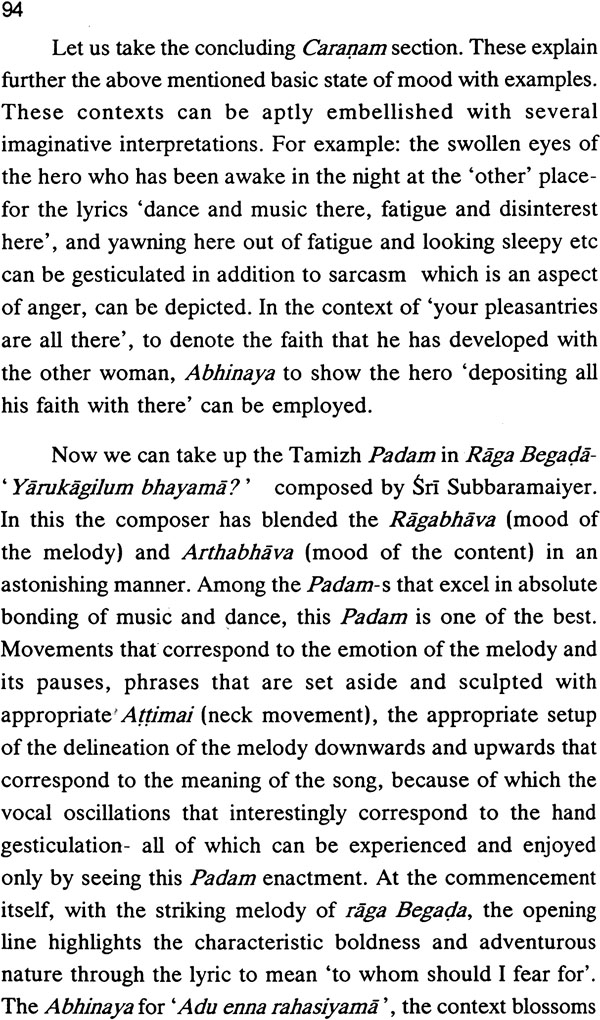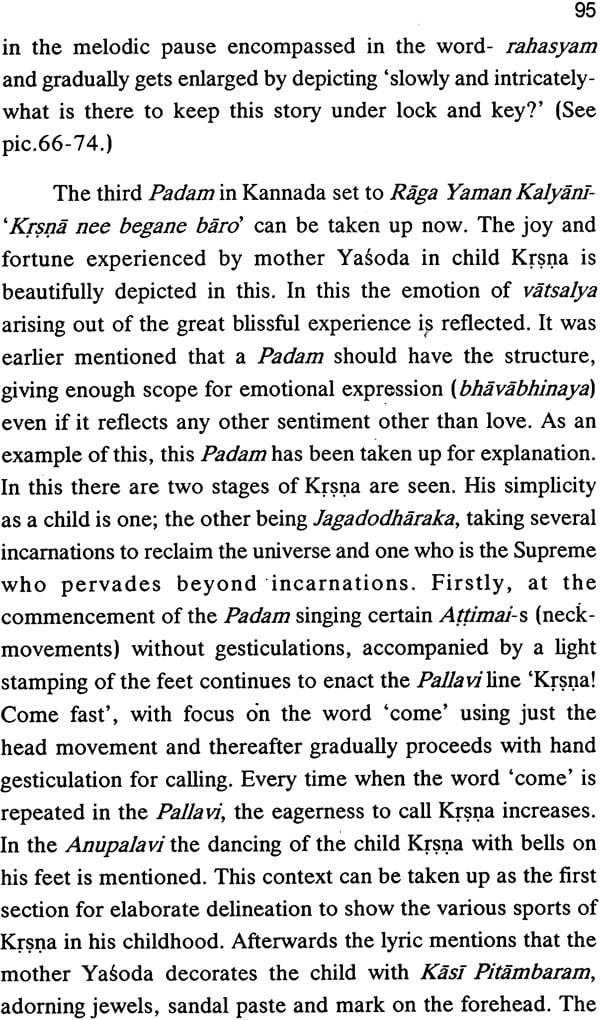
Journey through a Tradition (Kandappa-T. Balasaraswati Bharatanatyam Technique)
Book Specification
| Item Code: | NAH370 |
| Author: | Dr. V. Raghavan and Smt. Nandini Ramani |
| Publisher: | Dr. V Raghavan Institute of Performing Arts, Chennai |
| Language: | English |
| Edition: | 2020 |
| Pages: | 146 (20 B/W Illustrations) |
| Cover: | Paperback |
| Other Details | 8.5 inch x 5.5 inch |
| Weight | 240 gm |
Book Description
Foreword
I am honoured to write the Foreword to the English Translation of the book on Bharatanatyam by Dr. V. Raghavan and T. Balasaraswati. I am thankful to the Dr. V. Raghavan Centre for Performing Arts (Regd.) and to Smt. Nandini Ramani, for this kind gesture. I am sure this translation titled - “Kandappa - T. Balasaraswati Bharatanatya Technique” - by Smt. Nandini Ramani, Bala’s disciple, will be of great value to all connoiseurs of Bharatanatyam.
From the Translators’ Note, one gets to know about the authenticity of the original Tamizh text being the work of Dr. V. Raghavan, the great scholar, who with his in-depth understanding of the sastras and his passion for the art- form of Bharatanatyam, was able to bring out the essence of Nattuvanar Kandappa’s technique, interpreted by his disciple T. Balasaraswati, the exponent, along with her conductor for years, Sri. K. Ganesan, Kandappa’s son.
Dr. Raghavan’s own way of understanding the relevance of the Sastras to Bharatnatayam and Bala’s interpretation of the same in Prayoga is very valid today when tradition seems to be taking ever new turns through innovation in the basic grammar. Dr. Raghavan’s comparison of the Dandika Grahana, to the use of the bar in Western Ballet training, for learning the Adavus is a fine analogy; his inputs here are unparalleled.
The Chapter on Adavus emphasises the basic stance in Bharatnatyam, Ayata ; senior disciple of Bala, Priyamvada’s and Bala’s own pictures of neat stances and arm movements add special significance to this section and also speak of Kandappa - Bala’s strict training methodology.
In the chapter on Abhinaya, the tips for understanding and executing every important word in a Padam, is most valid today when more importance is given to dramatisation and narratives. The terms “Mei Adavu” and “Poi Adavu”, are much used in the chapter on Tillana which could form the basis for researchers on Adavus and their employment in “Attam” or “Nrttam”.
I have had the privilege of watching Smt. Balasaraswati perform both in recitals and home concerts in my formative years as a dancer - performer; I especially remember the latter on social occasions at my cousin’s home. The singing of Smt. T. Jayammal and Bala’s performances still remain fresh in my memory to adore her all the more Bala’s comparison of the Margam format to a devotee’s entry into the temple to attain the ultimate has been often quoted by dancers and scholars. This was her perception and visualisation of the Margam to reach the infinite bliss, the Paramananda.
Nandini Ramani’s translation of her father and guru’s stupendous work merits accolades as it is not an easy task to translate the work of a “period language”, especially on a subject like Dance. I wish to congratulate her for her painstaking effort.
With respects and adorations to Dr. Raghavan, Sri. Kandappa, Smt. T. Balasaraswati and Sri. K. Ganesan,
Publisher’s Note
It gives me great joy to have this work published by our Centre on the occasion of our father’s 102 Birthday Celebration. “A Journey through a Tradition” is a translation by my younger sister Smt. Nandini Ramani, of the original Tamizh text on the same subject by our revered father, Dr. V. Raghavan who has credited the co-authorship to T. Balasaraswati as the subject of the work pertains to her Natya Sampradaya. All of us in the family had been associated in some way with this book that was published many decades ago, to propagate the style of the Balasaraswati, and Nattuvanar Sri K. Ganesan who taught both my sisters Priyamvada and Nandini.
The Centre which is propagating Fine Arts and Indian Culture through its varied efforts, has chosen aptly to bring out this publication as a process of Documenting a unique Bharatnataya tradition, which will be available now for all those who seek and work in the areas of Oral Traditions and their Methodology.
It is sincerely hoped that this book will provide a vital golden link to the past and will be beneficial to dancers and researchers of the present and future.
Contents
| Photos 1-9 | iv-xii | |
| Foreword - Prof. C.V. Chandrasekhar | xiii | |
| Publisher’s Note - Sri. R. Kalidas | xv | |
| Translator’s Note - Srnt. Nandini Ramani | xvi | |
| Dr. V. Raghavan’s Contribution to a unique | ||
| Natya Sampradaya - Smt. Nandini Ramani | xxii | |
| The Bala Legacy - Smt. Nandini Ramani | xxvii | |
| Description of Photographs | xlii | |
| Text | ||
| 1 | History, Uniqueness and Methodology | 1 |
| 2 | Adavu Varieties | 12 |
| 3 | The order of Performance, | |
| The Cutcheri format and Items of repertoire | 36 | |
| 4 | Alarippu | 41 |
| 5 | Jatisvaram | 47 |
| 6 | Sabdam, Abhinayam | 57 |
| Varnam | 74 | |
| Padam, Rasam, Abhinayam | 88 | |
| Tillana | 106 | |
| O. | Conclusion | 120 |
| Glossary of Terms | 124 |













